Seasonal eating with Neema
Posted by Remya Padmadas on January 10, 2017By Bijal Vachharajani
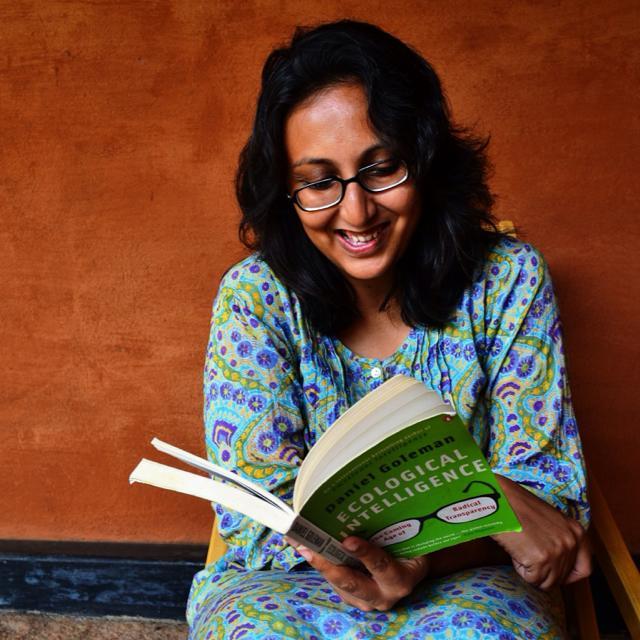
When Bijal Vachharajani is not reading Harry Potter, she can be found looking for tigers in the jungles of India. In her spare time, she works to fund the trips and books. She did this by working as the Editor at Time Out Bengaluru. After having studied climate change at the University for Peace, she now writes about education and sustainable development and is a consultant with Fairtrade Asia Pacific. She is also one half of BAM! Books, an Instagram-led project which talks about children's and Young Adult books. She tweets at @bijal_v.
My mother’s kitchen operates on a seasonal calendar, something I took for granted for a long time. As winter would approach, wondrous smells of ghee, whole wheat flour and jaggery simmering in a kadhai would tell us that godpapdi was being prepared that day. When rain would slow down our work schedule, spinach would no longer be cooked in the house, because mum believed that insects nestled in the palak leaves during the monsoon season. Summer would herald the impatient wait for our regular mango seller, until finally bowls of aam ras, chilled to golden goodness, arrived on the lunch table.
There’s an anticipation to eating seasonally – nothing beats drizzling notun gur over your creamy white dahi in winter, nibbling on slices of raw mango slathered with salt and red chilli powder at the beginning of summer, and wrestling with masala bhutta cobs in one hand and umbrellas in the other during the monsoon season. Which is pretty much what Neema, the protagonist of the picture book "What’s Neema Eating Today?" does – eat with relish but seasonally. And Priya Kuriyan has created the perfect Neema – a child who eats with abandon, enjoys her food, while revelling in nature’s bounty. Really, this picture book is all down to the extremely talented Priya!
Today with technology, our food’s taken on a homogenous quality which while convenient, is almost boring. Watermelons are available through the year, never mind that they taste bland most months. Strawberries taste like little cardboard pieces, while the mysteriously-available-in-March-mangoes are best left on trees to ripen naturally. I stopped eating bananas for a while when I read this story about how to keep up with our insatiable demand, farmers were being forced to ripen the fruits with the help of harmful chemicals. And I suspect Neema would definitely turn up her nose at it as well.
Which is why I was excited to do a book on eating as per the season, when Yamini Vijayan of Pratham Books StoryWeaver asked me to write one (I commission and edit a set of STEM picture books on environment for them). Of course, one of the challenges was leaving out autumn and spring. In school, we learn about the five types of seasons – spring, summer, monsoon, autumn, and winter. But most parts of India experience summer, monsoon, and winter, and which is why we decided to concentrate on those seasons. And Priya has captured the seasons beautifully – from the glowering clouds that roll up during the monsoon to that gorgeous feeling of being outdoors on a crisp, winter day. It’s all in there.
Neema is inspired from some of the work I have done with Fairtrade over the last couple of years – I have had the privilege to meet farmers and I am always gobsmacked at the kind of seasonal and local variety you find in our country. At the Fair Trade Alliance Kerala seed fest, a farmer from the Mananthavady taluk in the Wayanad district of Kerala had put up a dazzling display of 26 kinds of chillies. Another farmer who is part of Chetna Organic in Telangana is saving a local variety of red gram seed and growing it for her family. In Odisha, I sampled kala jira rice, which when cooked is so fragrant, that you will forget basmati in a trice.
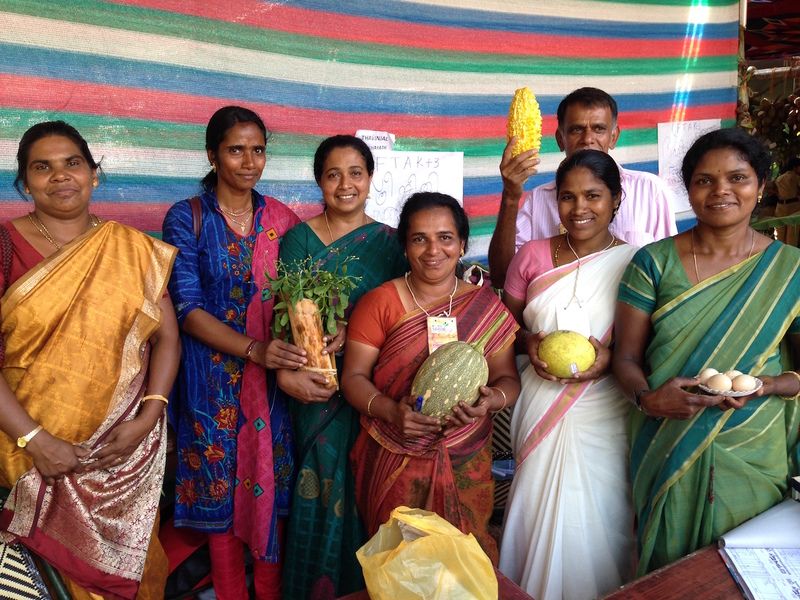
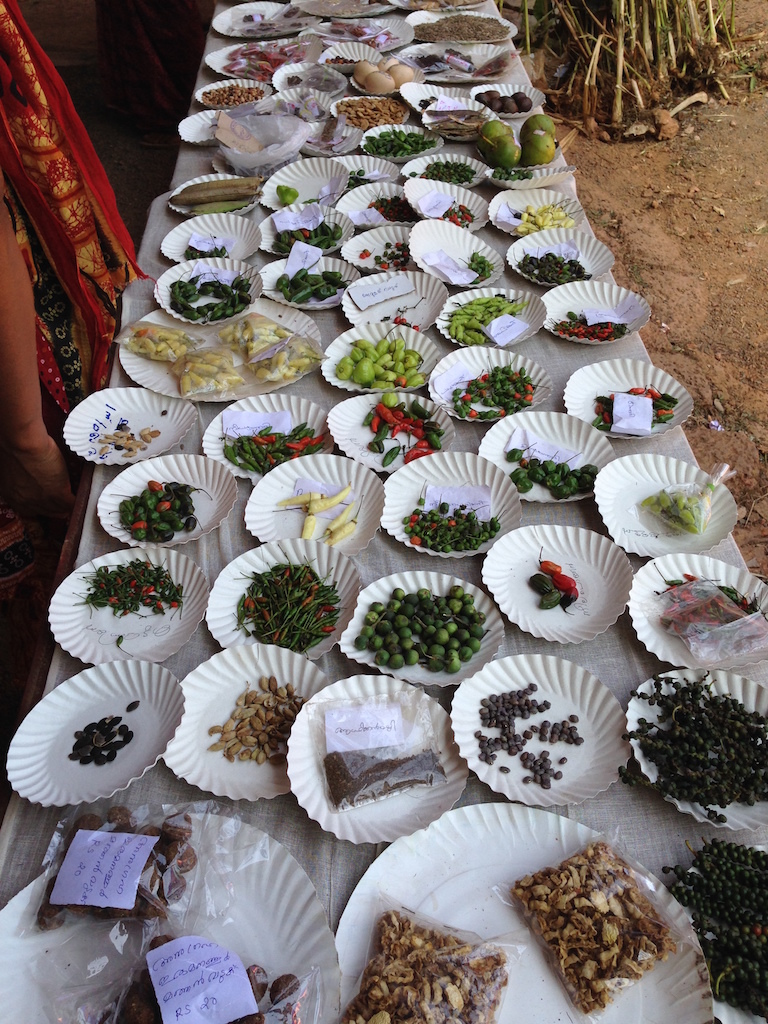
Copyright Bijal Vachharajani/Fairtrade India
However, not all’s well in the world of food diversity. The Food and Agriculture Organization of the United Nations estimates that since the “beginning of this century, about 75 per cent of the genetic diversity of agricultural crops has been lost.” And climate change is impacting agriculture at an unprecedented pace – the FAO says that the “change in seasonality attributed to climate change can lead to certain food products becoming more scarce at certain times of year. Such seasonal variations in food supply, along with vulnerabilities to flooding and fire, can make livelihoods more vulnerable at certain times of the year. Although these impacts might appear indirect, they are important because many marginal livelihood groups are close to the poverty margin, and food is a key component of their existence.”

Atram Kusu Bai is a Fairtrade farmer with Chetna Organic in Telangana. A cotton farmer, she's also preserving a red gram seed that is indigenous the region. Image copyright Bijal Vachharajani/Fairtrade India
It’s not easy always to eat seasonally, when you’re shopping online or faced with a dazzling array of apples, kiwis and oranges from far-flung corners of the world. Our food system has increasingly become complex. But ask your fruit seller, keep a track of seasons, and enjoy eating them. After all, fruits and vegetables taste best when in season. Or simply like the meme goes: Neema eats with the seasons. Neema is cool. Be like Neema.
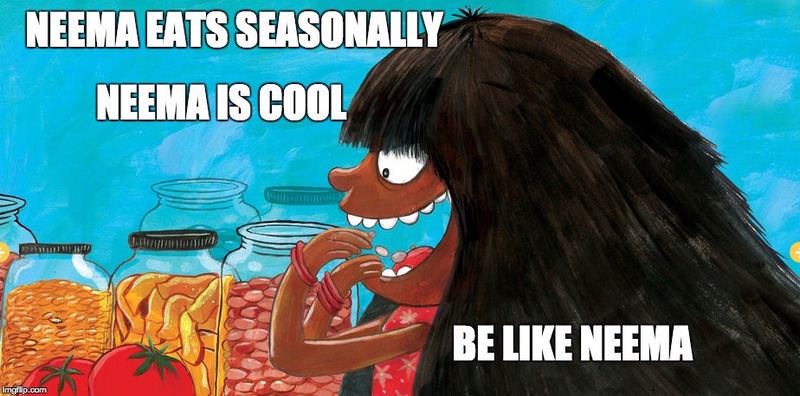
(Psssst... we had a super fun, informative twitter chat with Bijal on January 4th. If you missed it, you can read it here on Storify!)
Be the first to comment.We are hiring a Content Manager for StoryWeaver!
Posted by Remya Padmadas on March 20, 2020Pratham Books (www.prathambooks.org) is a not-for-profit children's book publisher that was set up in 2004 to publish good quality, affordable books in many Indian languages. Our mission is to see ‘a book in every child’s hand’ and we have spread the joy of reading to millions of children in India. As a publisher serving every child in India, Pratham Books has always pushed the boundaries when it comes to exploring innovative ways in which to create access to joyful stories and have been fortunate in finding partners to collaborate with who share this vision.
In 2015, Pratham Books' increased its footprint by going digital. As an industry leader, we were one of the first publishers in the country to open license our content. All this content is now available on StoryWeaver, which is a digital platform that hosts stories in languages from India and beyond, so that every child can have an endless stream of stories in her mother tongue to read and enjoy. The stories can be read, translated, versioned or downloaded for free. All stories on the platform are openly licensed.
We are looking for a Content Manager for the StoryWeaver team.
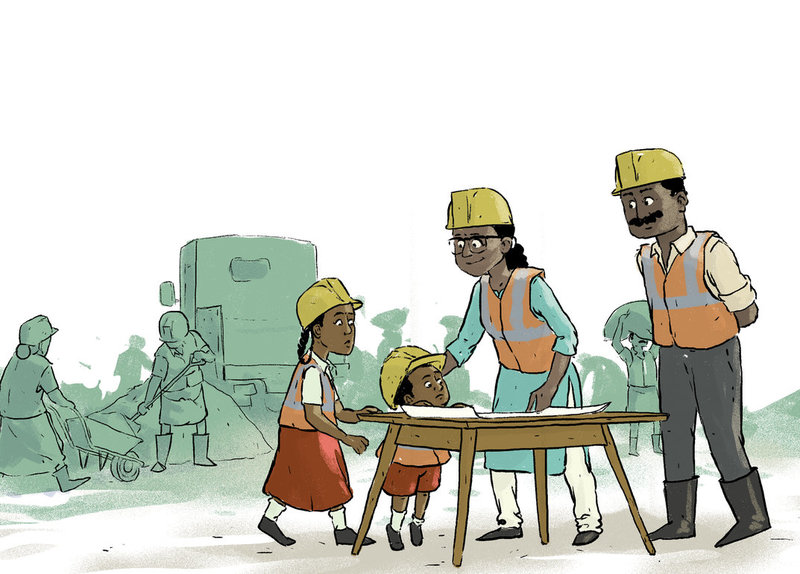
Illustration by Mohith Mohan from Building a Building, written by Kavitha Punniyamurthi, published by Pratham Books
We are looking for a dynamic individual for the position of Content Manager - StoryWeaver. A self-motivated individual with experience and skills in curating content from multiple sources, forging strategic partnerships and anchoring the process of migrating content to the platform. The person will lead a team and be responsible for timely execution to expand the content available on the platform to serve the needs of children globally. The role will report to the Director - StoryWeaver and will work closely with different internal and external stakeholders. This is a full time position based out of Bengaluru.
Key Responsibilities:
-
Lead the strategic planning, development, and management of content on StoryWeaver
-
Curation of Content
-
Continual development of new, innovative ideas to curate the content on the platform
-
Curate content based on requirements of organisations and partners so as to ensure users access quality content
-
-
Licensing and Sourcing Content
-
Create partnership opportunities with other publishers to open license their content on the platform
-
Work closely with the content team for sourcing children's storybooks under open licences from across the globe
-
Create, implement and showcase the best practices around open licensing of content through easily replicable frameworks
-
-
Orienting to Curriculum
-
Liaison with educational and governmental partners and teachers on curating content based on curriculum and structured frameworks.
-
Collaborate with internal and external stakeholders and subject matter experts to create and source curriculum based content.
-
-
Hygiene and Maintenance
-
Liaison with collaborators and internal and external stakeholder to ensure that high quality standards are met for crowd-sourced content - including review processes and red flagging of inappropriate content
-
Work closely with operations and studio teams to ensure processes and work-flows are created and well implemented
-
Work closely with the editorial, research and marketing teams on promotions and campaigns and to deliver the project goals
-
-
Other Tasks
-
To take on other tasks or responsibilities, as required for the project
-
Archiving and documentation
-
Required Skills
-
Post graduate in Literature / Education / Journalism with 6-8 years of experience in related fields. Experience with digital platforms is favourable
-
Experience in curriculum development or classroom experience
-
The candidate must have hands-on experience in review, proofreading and production related processes.
-
Exceptional communication skills
-
Highly organized and detail oriented
-
A proven track record to manage, lead and deliver large-scale operations
-
Proven ability to build consensus and work effectively within a cross-departmental team
Nice to have but not mandatory
-
Experience working with non-profits
-
1-2 years working in a partner-facing role
-
Indic language and digital publishing experience
Location:
This is a full-time position in our Bangalore office.
Compensation:
Salary will be commensurate with qualifications and experience
Write to us:
Email your resume with ‘Content Manager - StoryWeaver’ in the subject line to [email protected]
Be the first to comment.
Mota Raja visits the classroom!
Posted by Remya Padmadas on December 05, 2017Zarif Hussain, is a first year student at the Symbiosis Law School, Noida. As part of his course he is doing an internship with Servants of the People’s Society that runs Balwadis for very young children from underserved communities across Delhi-NCR. Read on to find out how Zarif used StoryWeaver in his sessions with the children.
I was asked me to take interactive sessions with the children at Trilokpuri Balwadi and I currently conduct one-hour sessions everyday with the little kids on different topics like GK, math and health education. The children love to listen to the stories and they ask me bring a new story almost every day for them.
At first finding stories for them was a difficult so I asked my mom to help me out. She recommended Pratham Books’ Storyweaver platform where she translates stories to Surjapuri for children and uses them extensively in education centers in Kishanganj, Bihar.
I checked the StoryWeaver platform and found that it was simple and beautifully done with stories across reading levels in multiple languages. I downloaded stories from StoryWeaver and the first story I narrated was “Fat King, Thin Dog” in Hindi. During the session I realised that StoryWeaver was just what I needed. The children loved the story and did a drawing of the Mota Raja. One of the children Faizan recited the story back to the class. In fact, when I did a recap of the story after few days they all remembered the story so well.
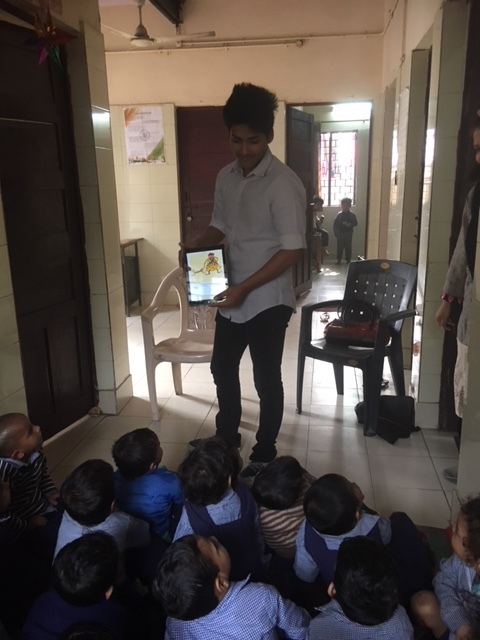
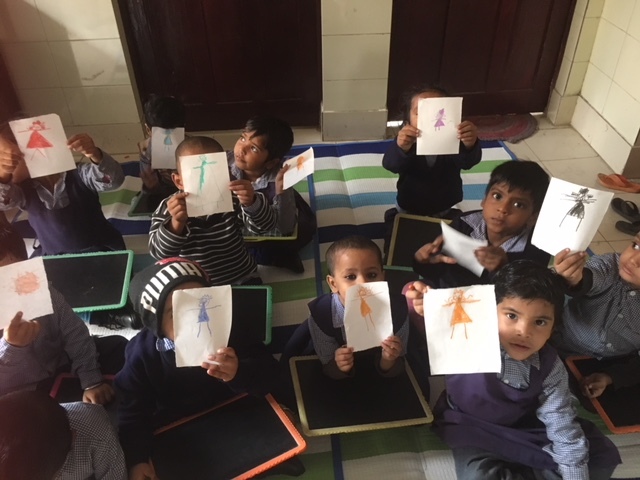
The next story we did was “Bunty aur Babli” which was about washing hands with soap with an emphasis on personal hygiene. The children learnt to wash their hands before eating food and after using toilet.
The most impressive thing I found about the stories on StoryWeaver was that they all had large, colorful pictures. The easy-to-use interface made it simple to download stories. I prepared activities for each story I narrated and that helped me retain the interest of the young children in class. Listening to the stories is the most enjoyable part of their day!
The stories on StoryWeaver are a great tool for teaching children. Thank you for making my sessions interactive and fun-filled with the children!
If you are using StoryWeaver in your classroom, library or after-school centre and would like to share your story on our blog write to [email protected]
Be the first to comment.